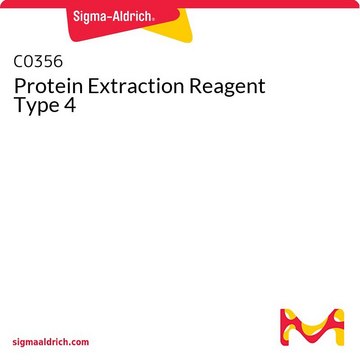Recommended Products
form
dry powder
storage temp.
2-8°C
Application
- Fraction 1: Soluble/Cytoplasmic Proteins
- Fraction 2: Membrane Proteins
Features and Benefits
- Innovative detergent preparations - Highly improved solubility allows for higher protein loads and greater visibility of low abundance proteins on 2D gels.
- Two pre-mixed solubilizaton solutions - Generates two distinct populations for easy 2D analysis.
- Pre-measured reducing and alkylating reagents - Easy-to-use reagents provide improved IEF resolution.
- Pre-weighed dry blends - Stable and easy to reconstitute
- Conveniently Packaged - No waste. Use only the amount needed.
Legal Information
Signal Word
Danger
Hazard Statements
Precautionary Statements
Hazard Classifications
Acute Tox. 3 Oral - Aquatic Chronic 2 - Carc. 2 - Eye Dam. 1 - Repr. 1B - Resp. Sens. 1 - Skin Corr. 1A - Skin Sens. 1 - STOT SE 3
Target Organs
Respiratory system
Storage Class Code
6.1C - Combustible acute toxic Cat.3 / toxic compounds or compounds which causing chronic effects
Flash Point(F)
Not applicable
Flash Point(C)
Not applicable
Regulatory Listings
Regulatory Listings are mainly provided for chemical products. Only limited information can be provided here for non-chemical products. No entry means none of the components are listed. It is the user’s obligation to ensure the safe and legal use of the product.
PDSCL
Please refer to KIT Component information
PRTR
Please refer to KIT Component information
FSL
Please refer to KIT Component information
ISHL Indicated Name
Please refer to KIT Component information
ISHL Notified Names
Please refer to KIT Component information
Cartagena Act
Please refer to KIT Component information
JAN Code
キットコンポーネントの情報を参照してください
Choose from one of the most recent versions:
Already Own This Product?
Find documentation for the products that you have recently purchased in the Document Library.
Customers Also Viewed
Our team of scientists has experience in all areas of research including Life Science, Material Science, Chemical Synthesis, Chromatography, Analytical and many others.
Contact Technical Service













